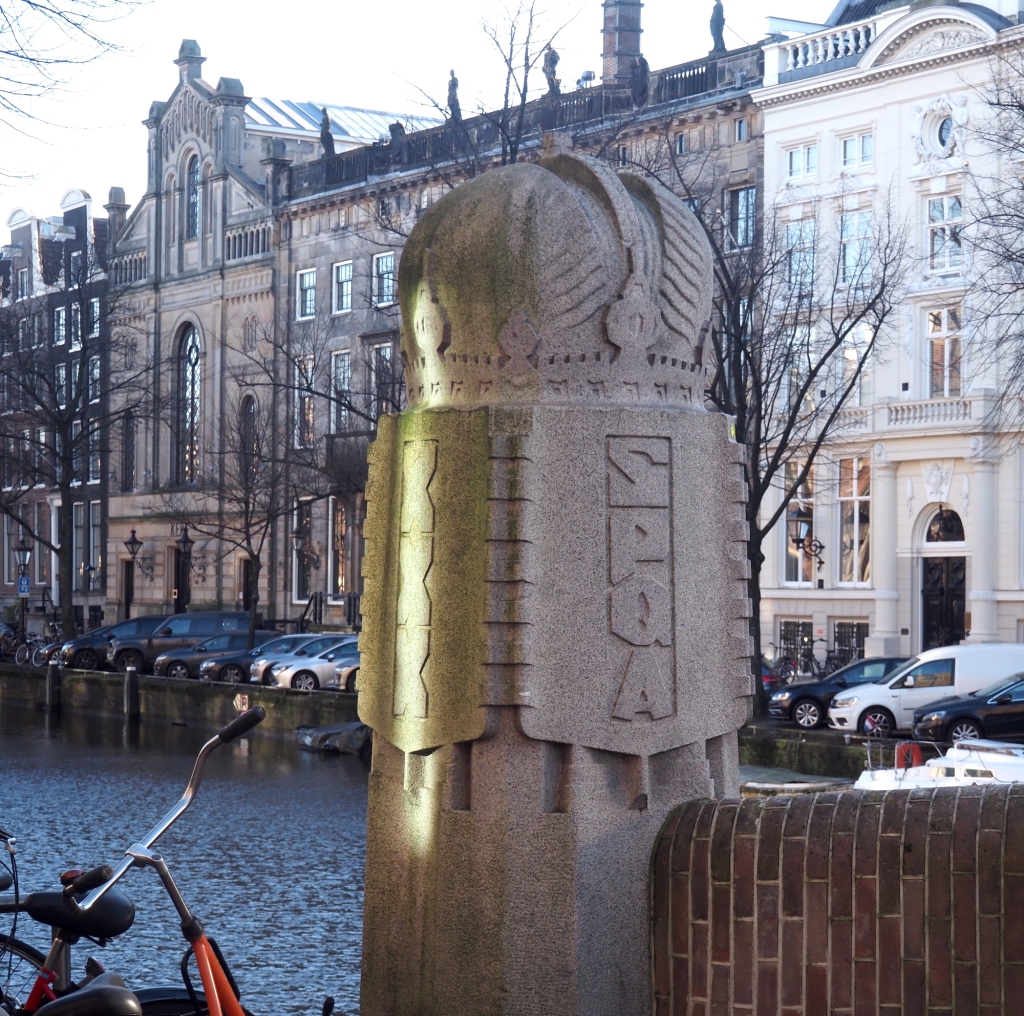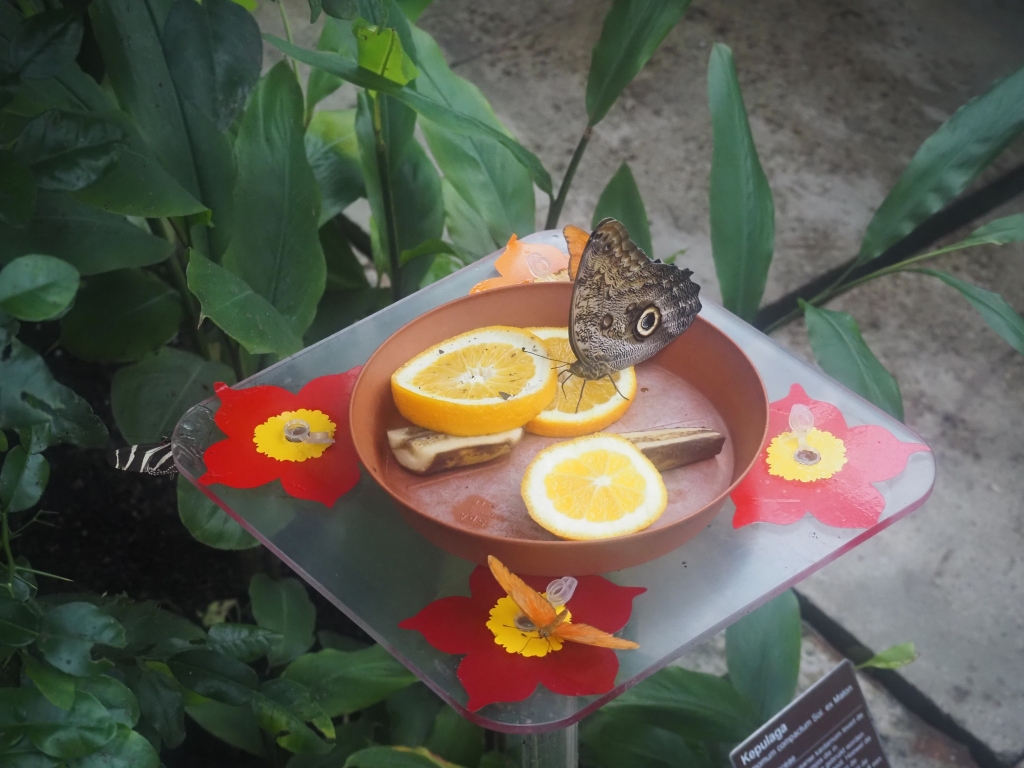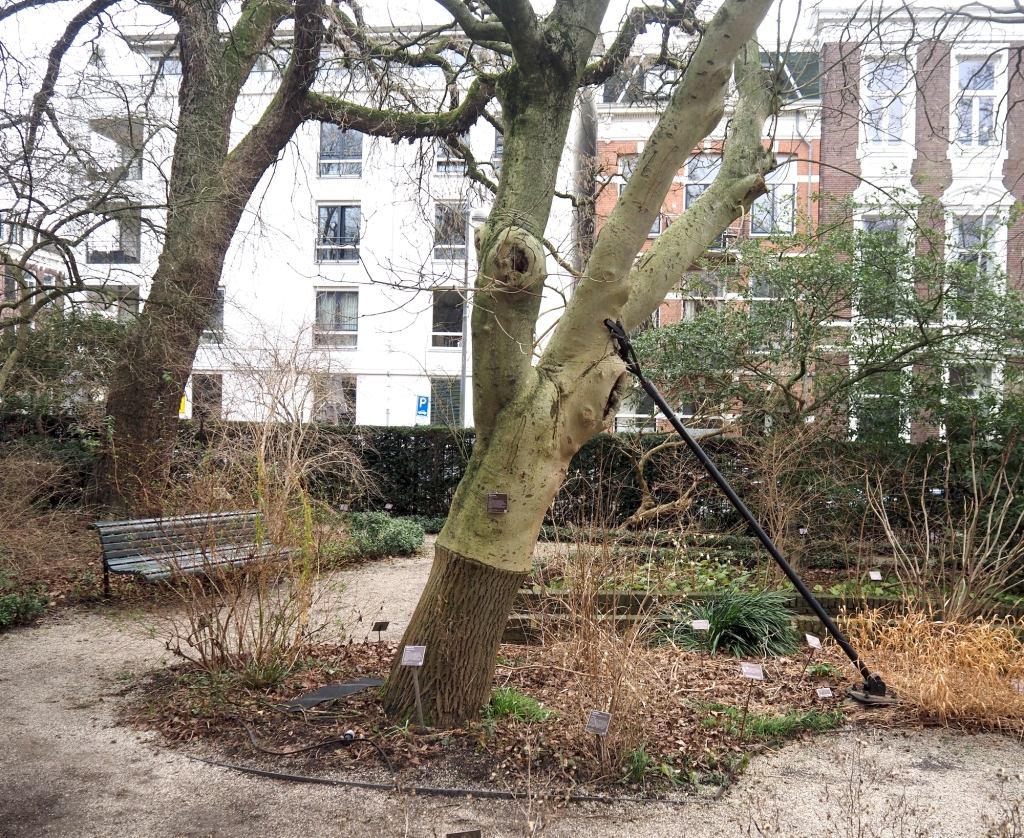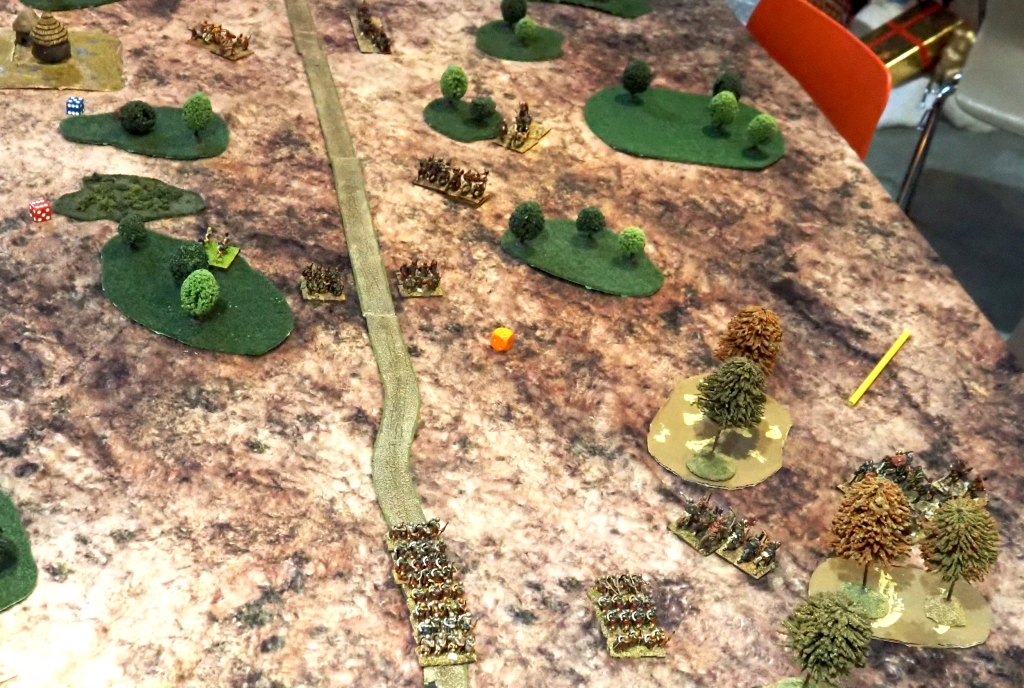It’s not been a colourful time of year. Last month I spent a few days in Amsterdam. There was a hard cold and I should have worn gloves on my morning runlets. I came away with the feeling that it is shape, not colour, that this city’s buildings and street plan make you look at. Texture comes next: different rubs of brick and sometimes stone. Colour only after that.

(An experiment with a new way of combining pictures. I like it, but had not taken into account that each has to be the same shape.)
But Brussels is the same! my friend Ms C told me (Brussels is where she comes from; she has lived in Amsterdam for four or five years now): it doesn’t have colour either. I spent a day there on the way home, having lunch with the Maître and his family and playing games with the Aussie. It was a louring day but still, I could see that Ms C was wrong. The buildings of Brussels carry pictures, some of the buildings are painted, for example in pastels; and this is even before you come to discuss the shops’ permitted fascias or the more prominent advertising hoardings there.
When I was young I worked for an organisation that sent me out from London to the cities of the Midlands and the north to talk about how community organisations could help them get out of the post-industrial messes that they were then, generally, in. In most of them, reasonably enough in my case at least, you got a reaction along the lines of What the hell do you know? – people from London! always thinking they know better! In Liverpool the reaction was different. There they knew themselves to be better than London, than any other city in Britain. This arrogance gave them the room they needed to welcome strangers and newcomers, even those like me who knew little. Amsterdam is like Liverpool in this, I think. As just one example the abbreviation SPQR (the Senate and People of Rome) was found across the Roman world – and you can find the same thing, immodestly carved, on bridges in Amsterdam:

(After writing this I went online to check if there are British municipalities that have also used SPQx. According to Wikipedia there are three. The first, logically enough, is the City of London; the second, pleasingly, is Liverpool. It is true that the third is, apparently, Pining & Severn Beach Parish Council – but every good theory needs a counterexample.)
I spent a day in Alkmaar, where Travelling Companion and I lived for three years. I am sure we have done the right thing to retire to London; but that day I felt that our time in Alkmaar was unfinished, unfulfilled. Mainly this is because we lost a lot of it to the virus.
The Dutch lockdown was mostly softer than those in England, Brussels and France. But there were a few months when we and only we had a nine o’clock curfew. There was an exception for dog walking. On those evenings the man across the canal, walking a small dog with a Scandinavian name, used to give me a greeting and a wave. This time when he saw me having a neb at the house we lived in

(it’s the one in the middle with the garage door) he invited me in for a coffee and we found out more about each other than we had in those months and years.
Later I ate with old colleagues in the Stadskaffee Laurens. Ms C gave me a lift back to Haarlemmerplein in Amsterdam and I walked back along the canals. Someone ahead of me was whistling variations on Take me home, country roads.
In Amsterdam at the FOAM photography gallery, which Travelling Companion and I went to once in the early days, I had a similar feeling of sadness for the things we didn’t do. The exhibition I saw there this time was of Tina Modotti. In my head I had amalgamated her with Graciela Iturbide. I see the pictures of men with sombreros on their heads, I said to myself ignorantly – but why have they left out the equally strong picture of the woman with a lobster on her head?

(Several iguanas, actually.)
The Diplomat and I went to the Hortus botanic garden. He took me to the butterfly house

and showed me the tree grafted to a tree.

In the palm house I remembered and liked the 300 year old cycad from the Cape.
With members of the Amsterdam 6-Shooters wargames club, where I used to go, I refought legate Petilius Cerialis’ too-late attempt (coming up the road in the picture) to relieve Boudica’s rebels’ siege of Colchester.

To get to these different places I caught trams. Smart blue and white and you feel you are part of the city. The tram network criss-crosses it. There’s more legroom than on London buses (there are few buses in Amsterdam). But they’re slow – you only don’t notice this because it is not apparent how Amsterdam is small compared to London. My average door to door speed on the trams was 3.8 kph. I wonder what it would have been, cycling.

(Leidsestraat: picture from a previous visit)
I was in Amsterdam for half an operation, left over from our time in Holland. I saw your king twice last year when I visited London said a nurse to relax me – and I’ve never seen our own. I saw the king of Belgium when I first went to Brussels, I said back – and I’ve never seen our own. Now, you need to sit on your side while you are lying, she told me. Lie on your side while sitting, said her partner. We have agreed to differ, the first one said. It was a Dutch sort of conversation.

